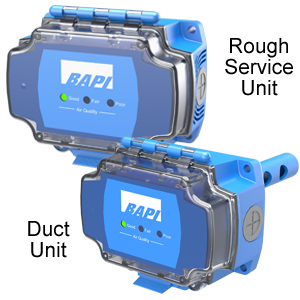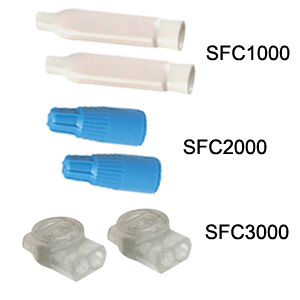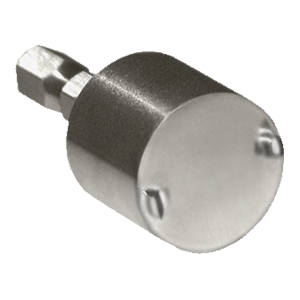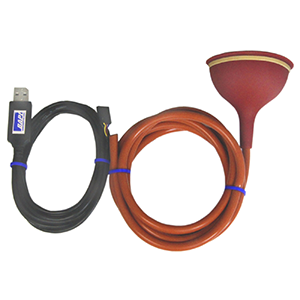CO2 – “24/7” Duct and Rough Service Carbon Dioxide Sensor, Constant Occupancy
Configure Product:
If you can't find what you're looking for, please give us a call at +1-608-735-4800.
The BAPI CO2 “24/7” Duct and Rough Service Sensors are an accurate and reliable way of incorporating demand controlled ventilation. They measure the CO2 in ranges of 0 to 2,000, 0 to 5,000, 0 to 10,000 and 0 to 50,000 ppm with a field selectable output of 0 to 5 or 0 to 10 VDC.
The units feature continuous automatic Barometric pressure compensation for accurate readings despite the weather or the altitude of the installation, which earned the sensor a 2012 AHR Expo Innovation Award. For 0 to 2,000 PPM units, the CO2 level is indicated as “Good, Fair or Poor” by three discrete green, yellow and red LED’s on the front of the unit. If the reaches the top of the PPM range, the red LED will begin to flash.
- Automatic Barometric Pressure and Temperature Compensation
- Optimized for Periodically Continuously Occupied Areas
Datasheet for Submittal
Datasheet with Pricing
Instruction Sheet
Description
The BAPI CO2 “24/7” Duct and Rough Service Sensors are an accurate and reliable way of incorporating demand controlled ventilation. They measure the CO2 in ranges of 0 to 2,000, 0 to 5,000, 0 to 10,000 and 0 to 50,000 ppm with a field selectable output of 0 to 5 or 0 to 10 VDC.
The units feature continuous automatic Barometric pressure compensation for accurate readings despite the weather or the altitude of the installation, which earned the sensor a 2012 AHR Expo Innovation Award. For 0 to 2,000 PPM units, the CO2 level is indicated as “Good, Fair or Poor” by three discrete green, yellow and red LED’s on the front of the unit. If the reaches the top of the PPM range, the red LED will begin to flash.
- Automatic Barometric Pressure and Temperature Compensation
- Optimized for Periodically Continuously Occupied Areas







